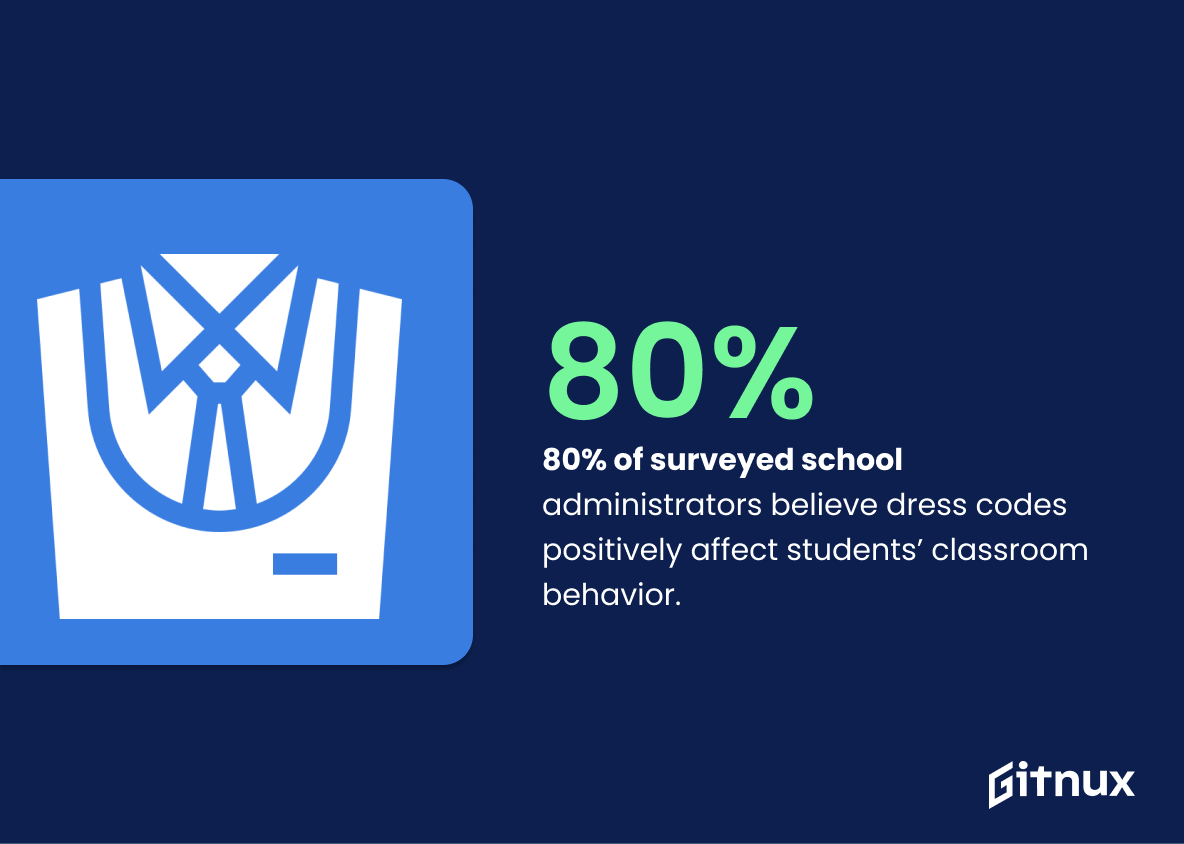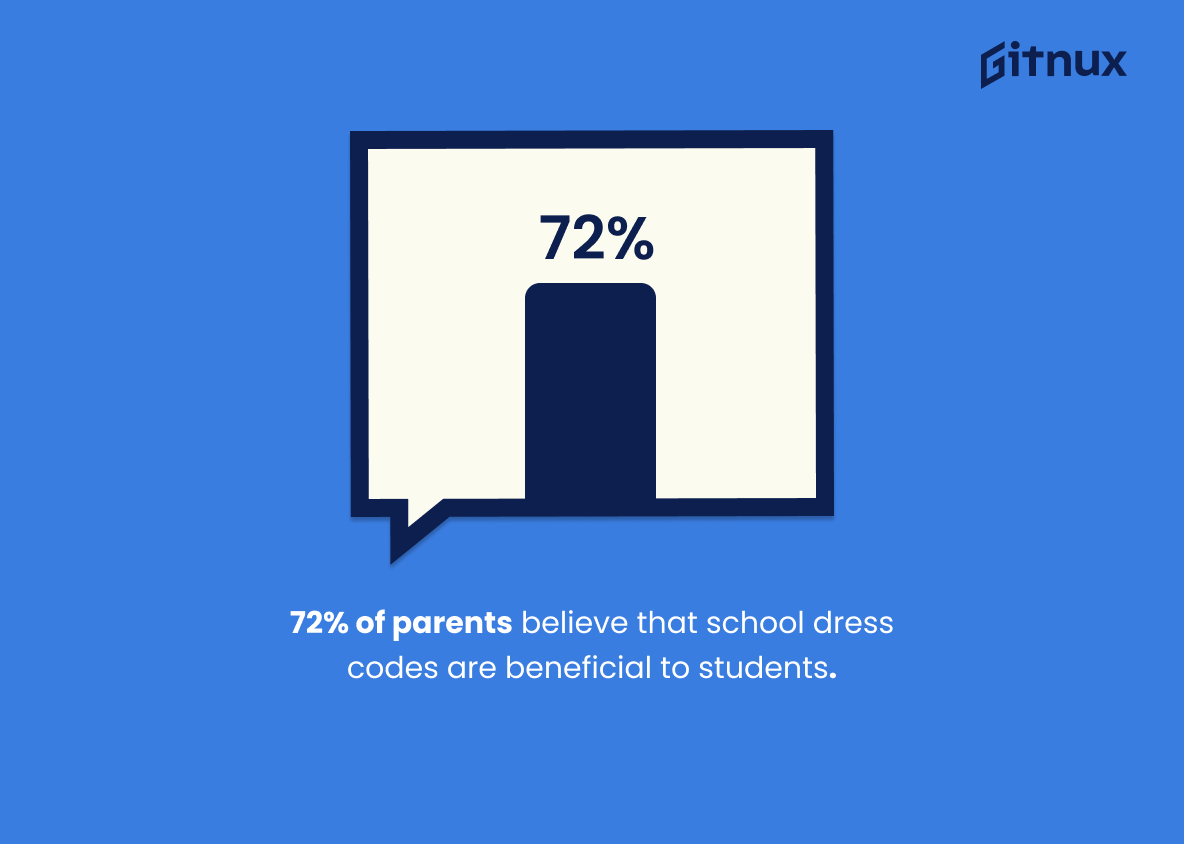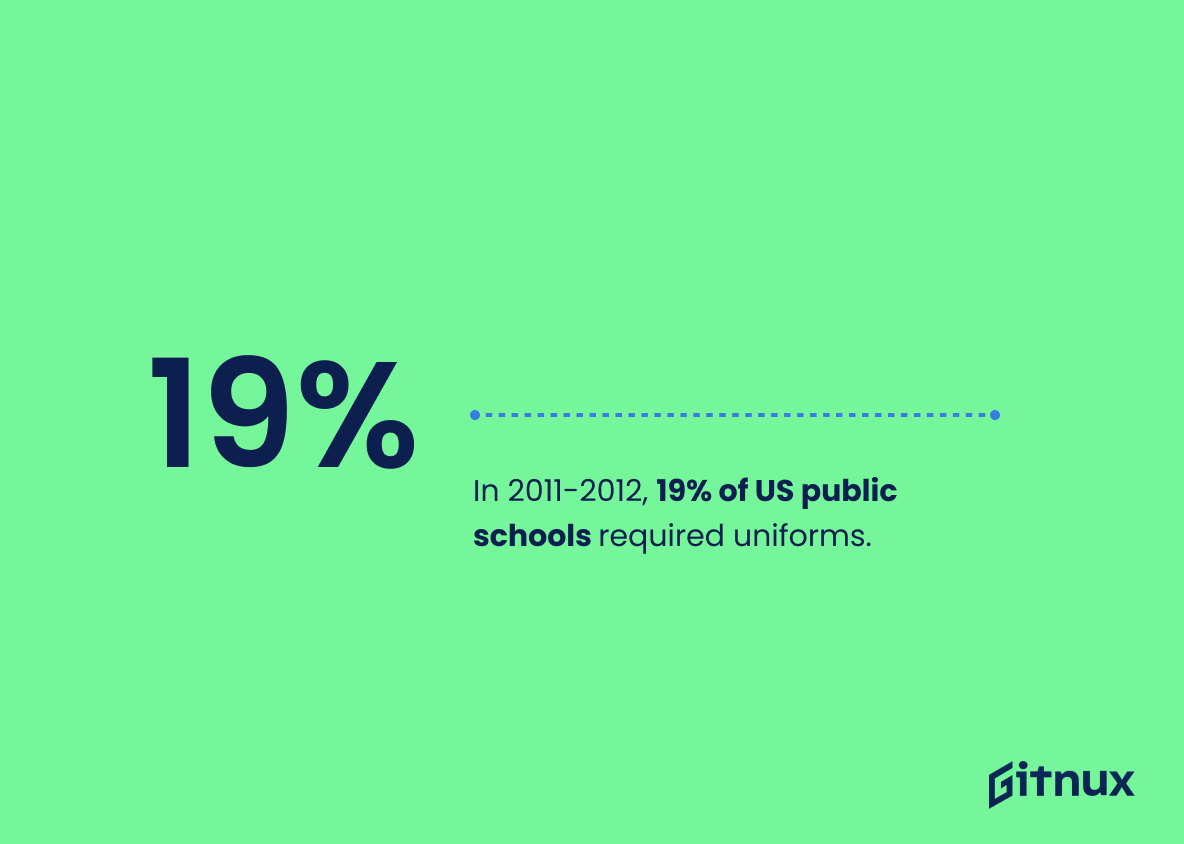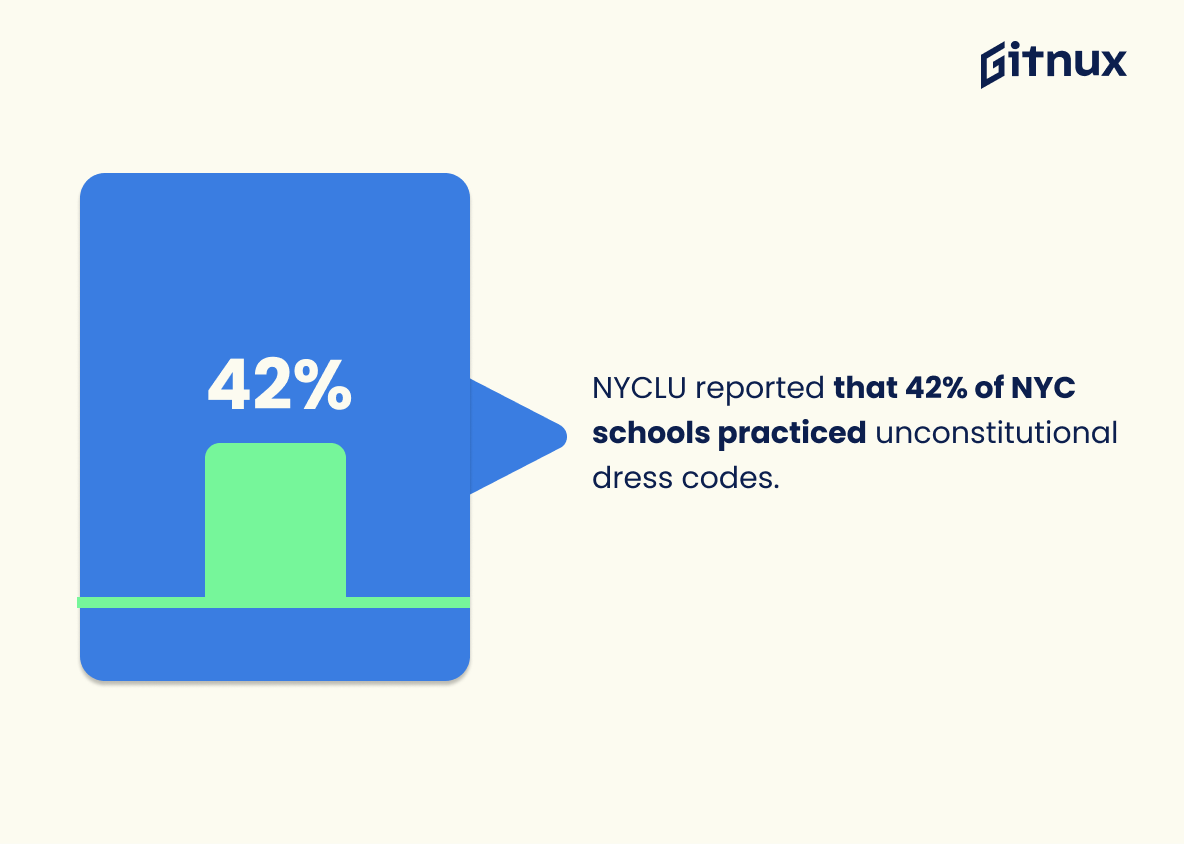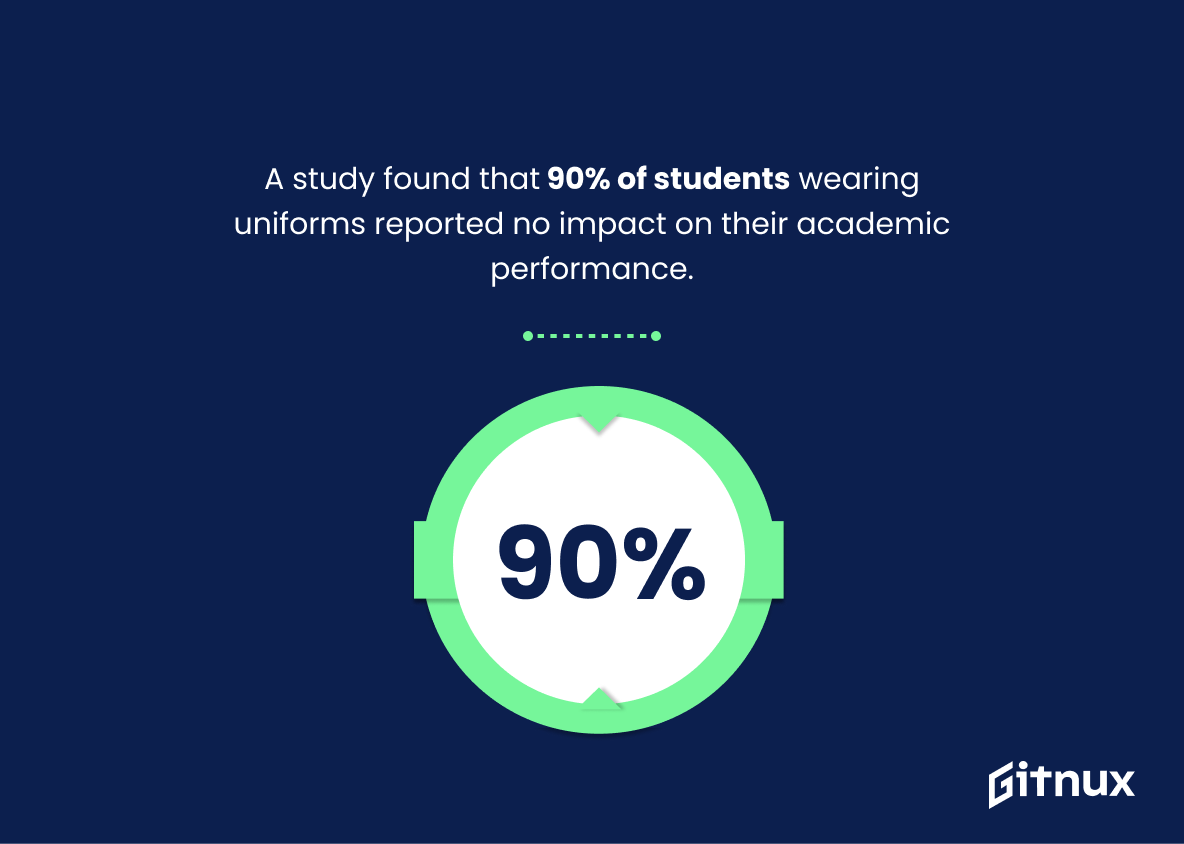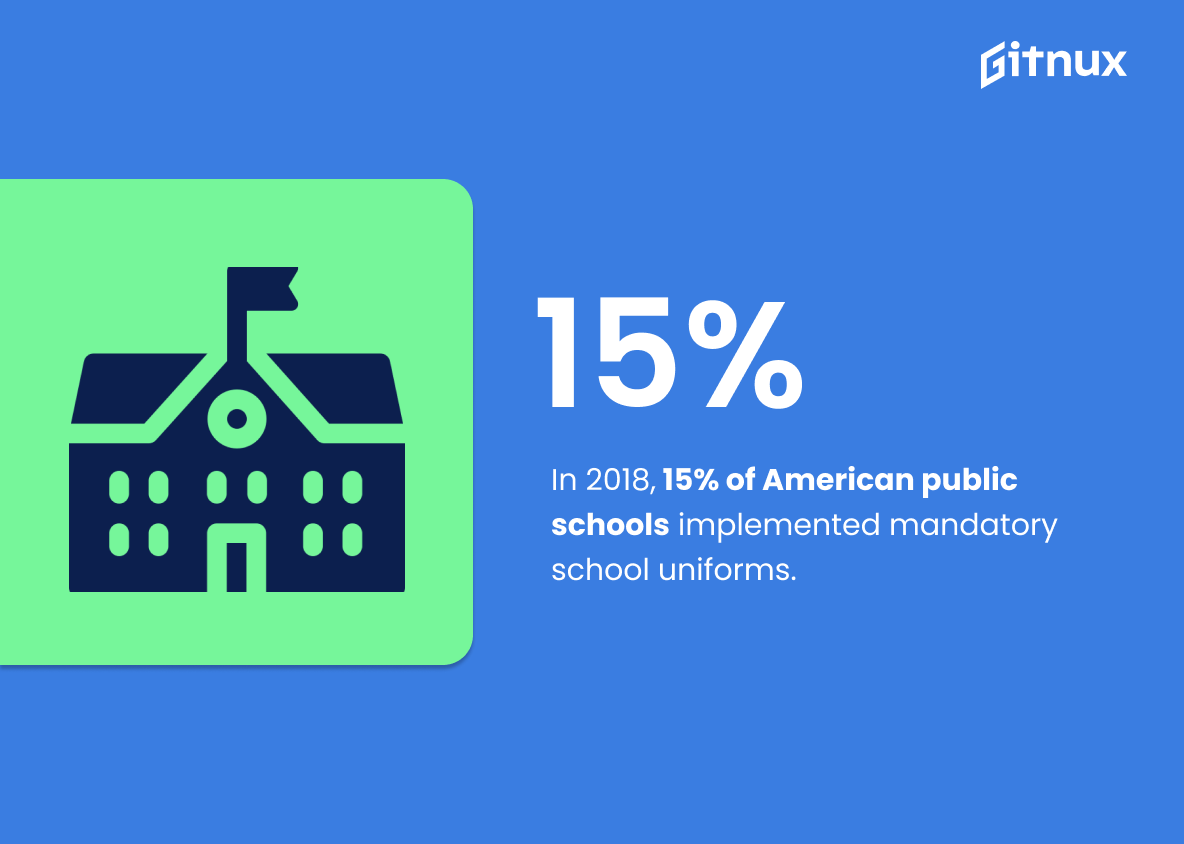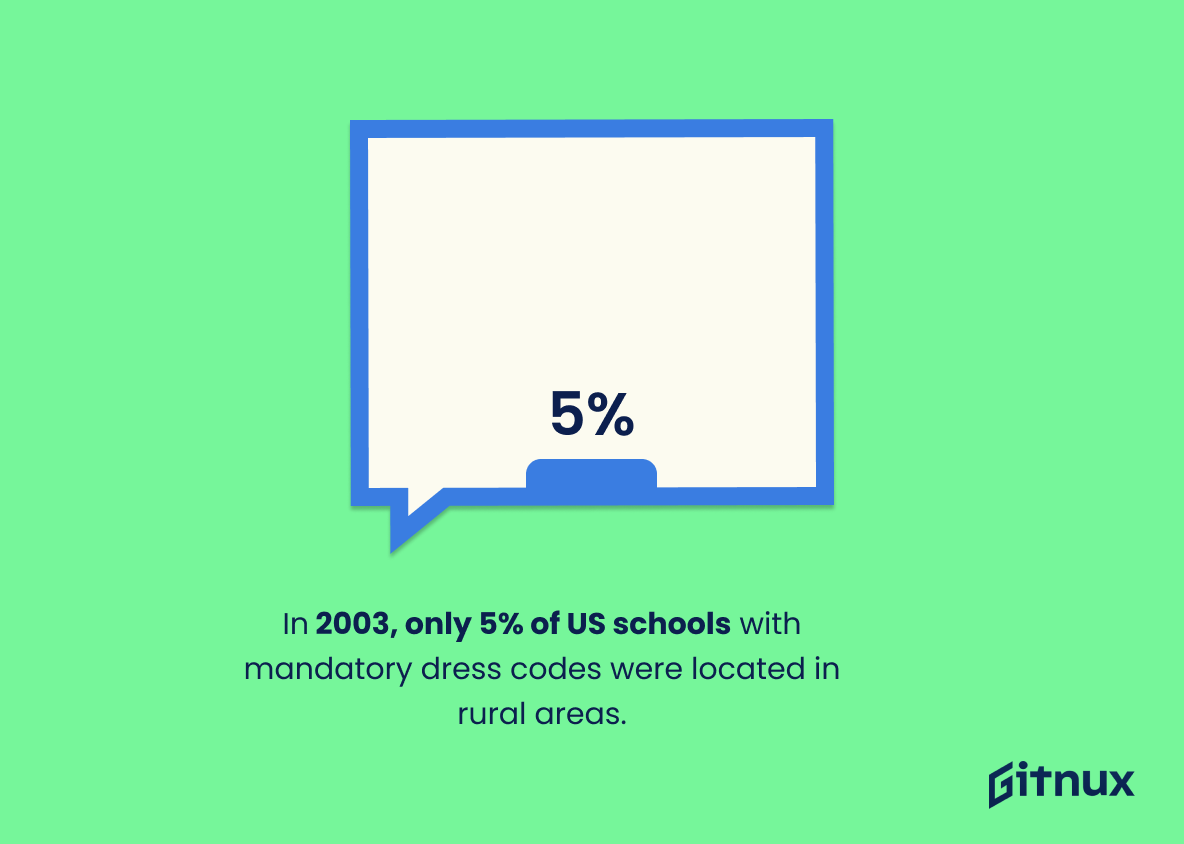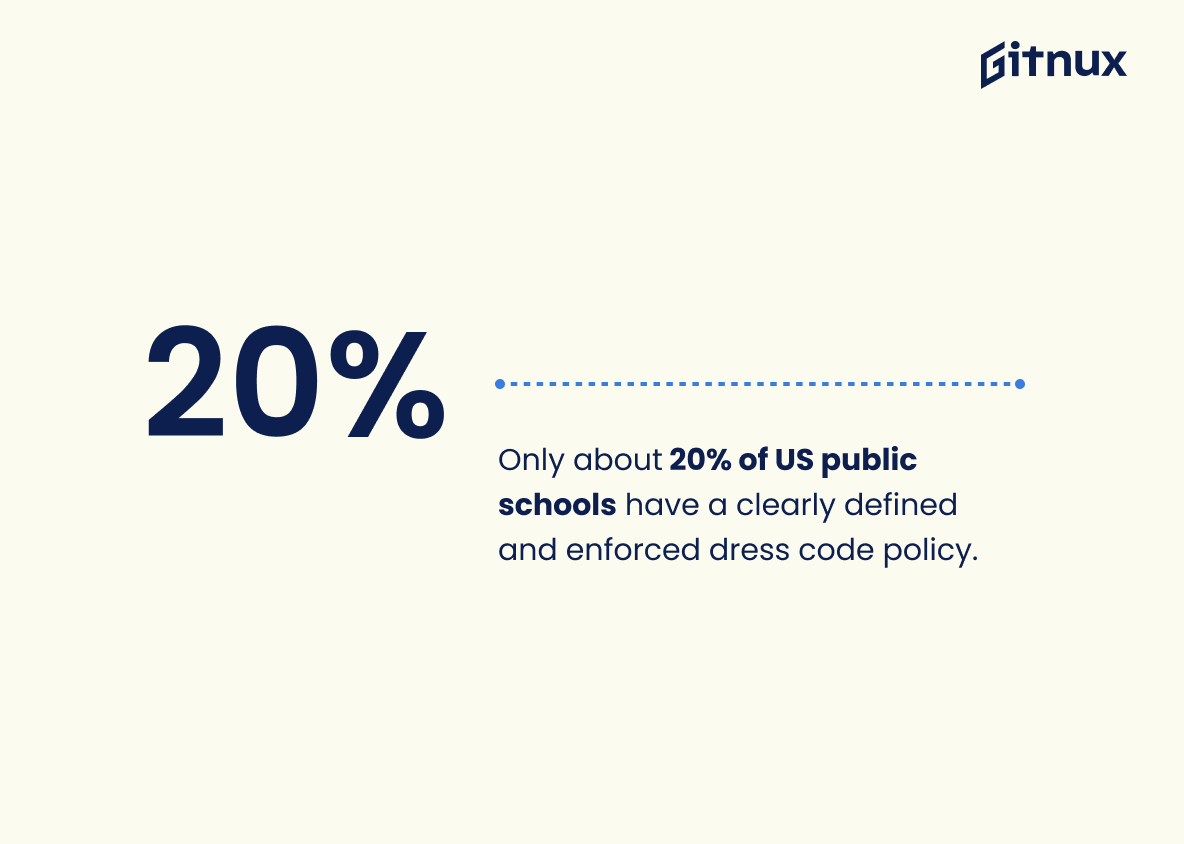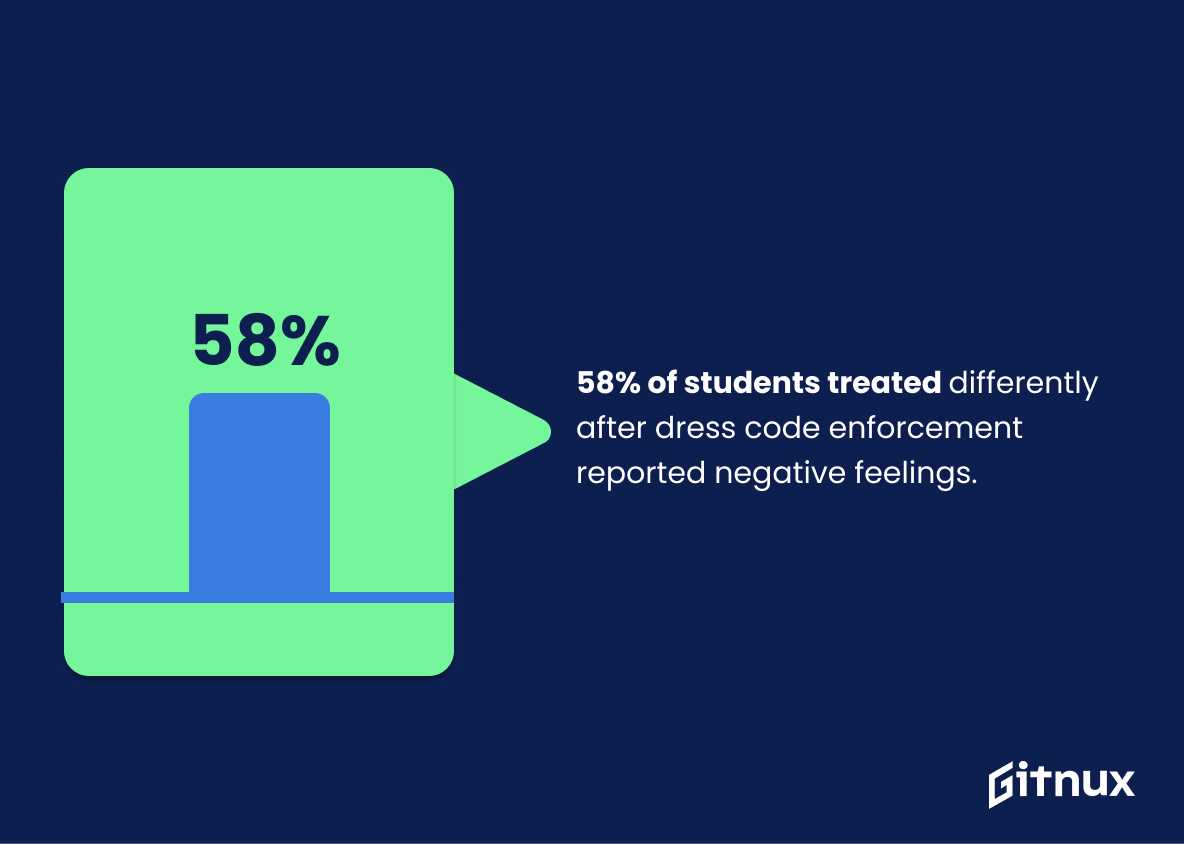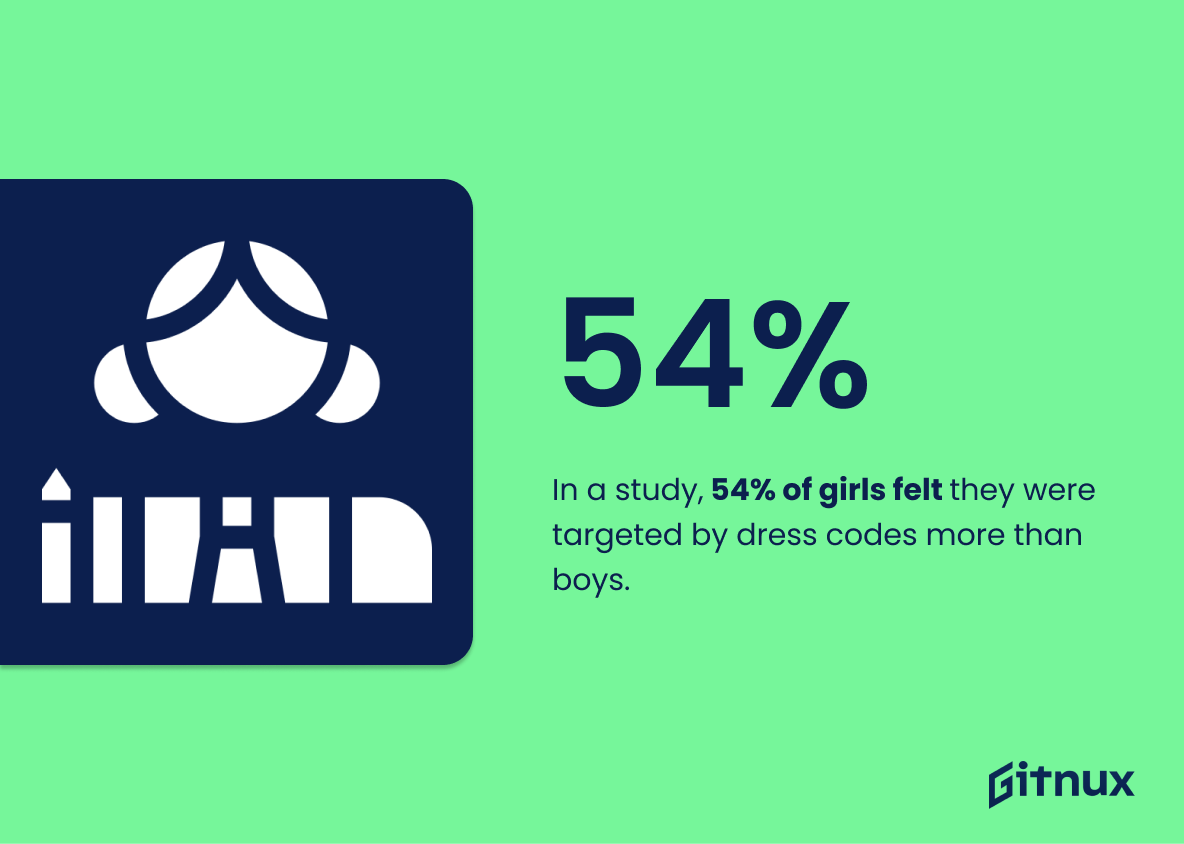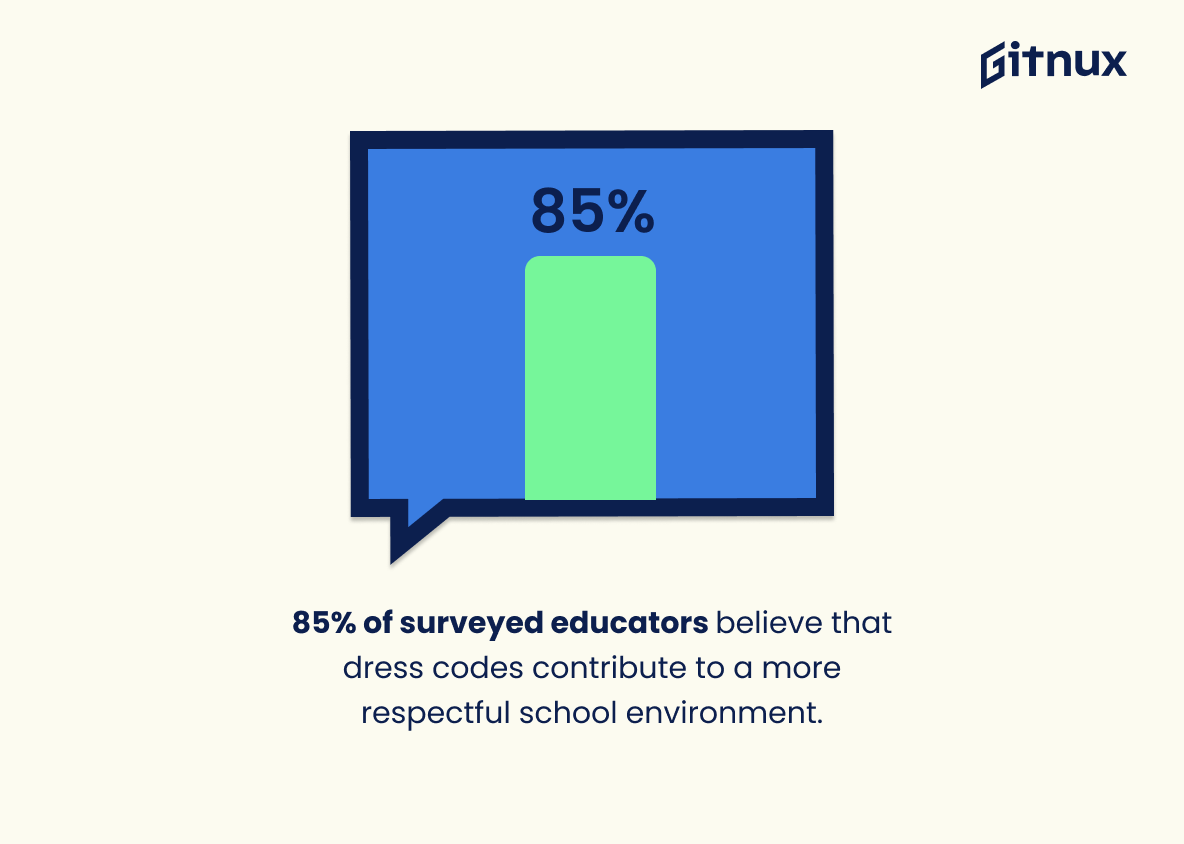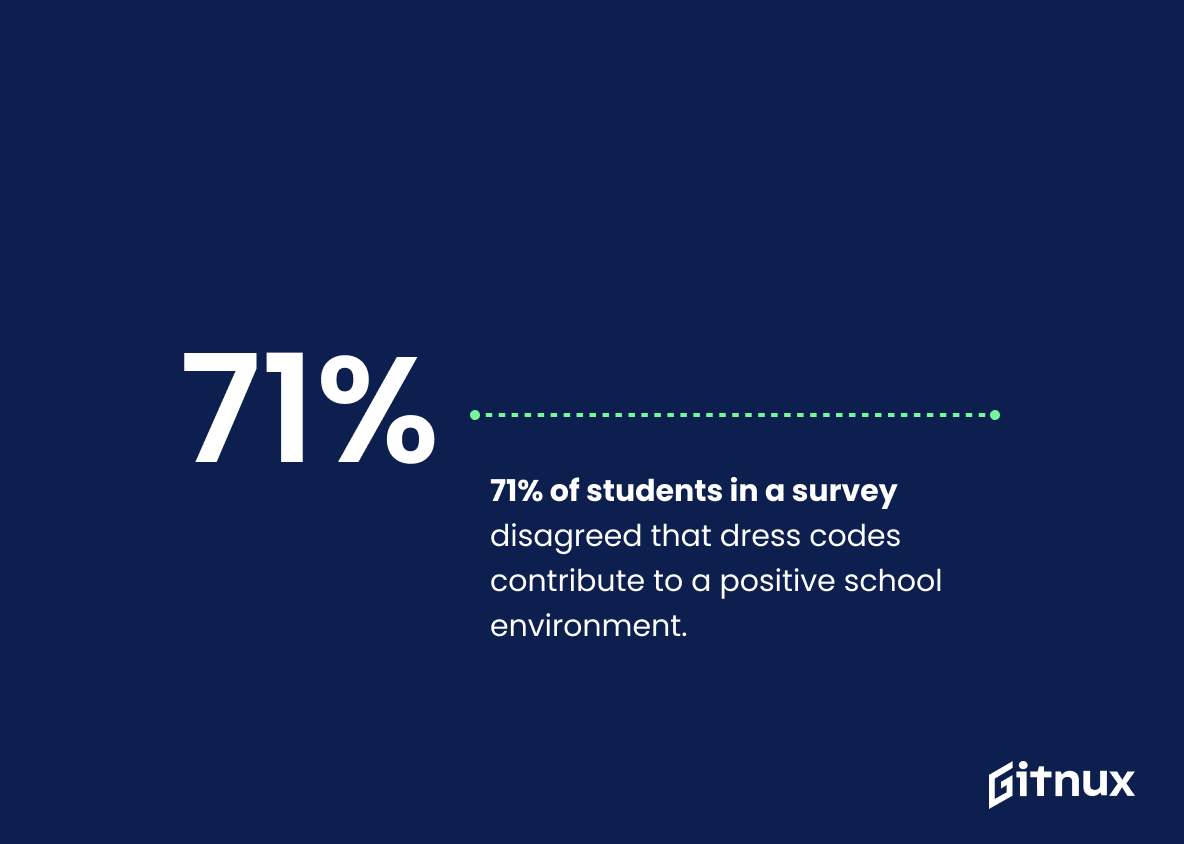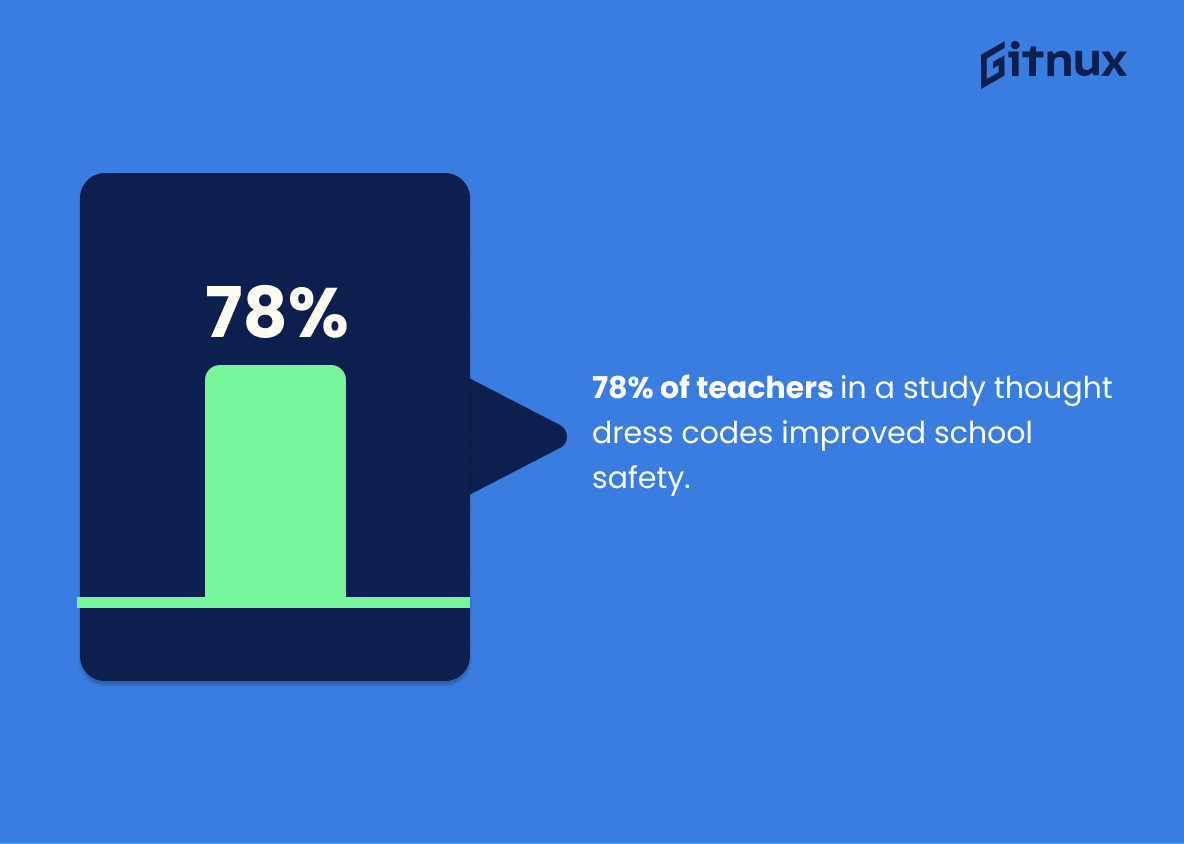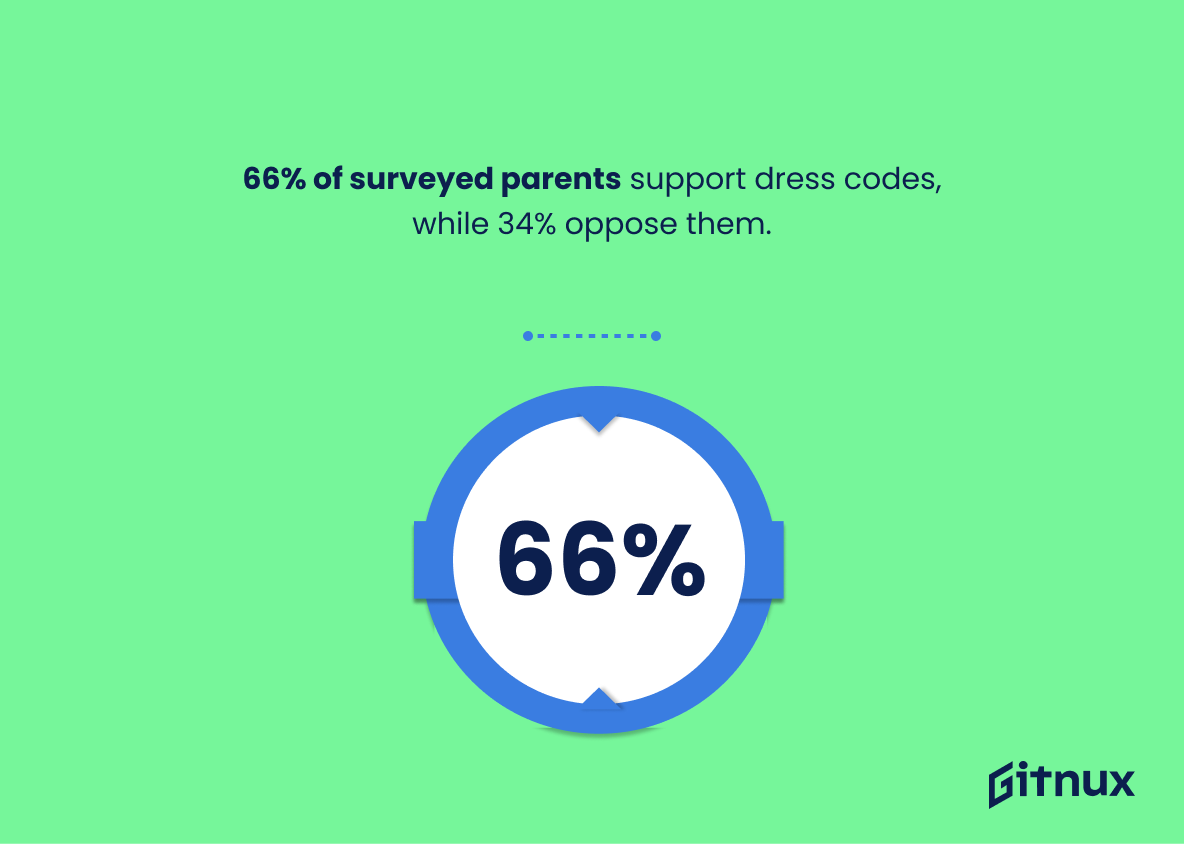In the US, dress codes are enforced in 55% of public schools and required in 65% of private schools. According to a survey, 80% of school administrators view them as beneficial to student behavior, a belief shared by 72% of parents. They also suggest that dress codes reduce school violence by 60%.
The National Center for Education Statistics reported that uniforms were required in 19% of schools during the 2011-2012 academic year. However, the NYCLU found that 42% of NYC schools had unconstitutional dress code policies. A University of Nevada, Las Vegas study showed that 90% of uniform-wearing students saw no effect on academic performance.
In response to student safety concerns, over 100 California schools have implemented dress codes since 2011. The Atlantic magazine reported that 15% of American public schools had mandatory uniforms in 2018. Sage Publications’ 2003 study revealed that only 5% of rural areas had mandatory dress code policies. Following strict code enforcement, a survey of high schools found that 58% of students had negative feelings towards the new regulations.
According to reports, 44% of US districts have a policy addressing dress codes or uniforms. The NEA reports that 54% of girls felt targeted more than boys. Meanwhile, 85% of educators believe dress codes contribute to a respectful environment, a view disputed by 71% of respondents in a University of Arkansas for Medical Sciences survey. According to a Law Street Media report, 78% of teachers think dress codes improve school safety, with 66% of parents supporting them and 34% opposed.
Dress Codes In Schools Statistics Overview
80% of surveyed school administrators believe dress codes positively affect students’ classroom behavior.
This statistic is significant in the context of a blog post about Dress Codes In Schools Statistics because it demonstrates the widespread belief among school administrators that dress codes can have a positive impact on student behavior in the classroom. This provides a strong argument for the implementation of dress codes in schools, as it suggests that such policies can have a beneficial effect on student conduct.
72% of parents believe that school dress codes are beneficial to students.
This statistic is a powerful indicator of the positive impact that school dress codes have on students. It shows that the majority of parents recognize the value of dress codes in providing a safe and productive learning environment for their children. This statistic is an important piece of evidence that can be used to support the argument that dress codes are beneficial to students and should be implemented in schools.
In 2011-2012, 19% of US public schools required uniforms.
This statistic is a telling indication of the prevalence of school uniforms in the United States. It demonstrates that a significant portion of public schools have adopted a dress code policy that requires students to wear uniforms. This is an important piece of information to consider when discussing the impact of dress codes in schools.
NYCLU reported that 42% of NYC schools practiced unconstitutional dress codes.
This statistic is a stark reminder of the prevalence of unconstitutional dress codes in NYC schools. It highlights the need for greater awareness and enforcement of laws that protect students’ rights to express themselves through their clothing. It also serves as a call to action for school administrators to ensure that their dress codes are in line with the law.
A study found that 90% of students wearing uniforms reported no impact on their academic performance.
This statistic is significant in the context of a blog post about Dress Codes In Schools Statistics, as it demonstrates that uniforms do not have a negative effect on students’ academic performance. This suggests that implementing a dress code in schools may not be detrimental to students’ academic success, and could even be beneficial in some cases.
In 2018, 15% of American public schools implemented mandatory school uniforms.
This statistic is significant in the context of a blog post about Dress Codes In Schools Statistics, as it provides insight into the prevalence of mandatory school uniforms in the United States. It demonstrates that a significant portion of American public schools have adopted a policy of requiring students to wear uniforms, which can have a major impact on the school environment.
In 2003, only 5% of US schools with mandatory dress codes were located in rural areas.
This statistic is significant in the context of a blog post about Dress Codes In Schools Statistics because it demonstrates that rural schools are less likely to have mandatory dress codes than their urban counterparts. This could be due to a variety of factors, such as limited resources or a lack of awareness of the benefits of dress codes. It is important to consider this statistic when discussing the prevalence of dress codes in schools, as it provides insight into the disparities between rural and urban schools.
Only about 20% of US public schools have a clearly defined and enforced dress code policy.
This statistic is a telling indication of the lack of uniformity in dress code policies across US public schools. It highlights the need for more consistent regulations to ensure that all students are held to the same standards of dress and appearance. This is especially important in the context of a blog post about Dress Codes In Schools Statistics, as it serves to emphasize the importance of having a clear and enforced dress code policy in place.
58% of students treated differently after dress code enforcement reported negative feelings.
This statistic is a powerful indicator of the impact that dress code enforcement can have on students. It shows that a significant majority of students feel negatively affected by the enforcement of dress codes, suggesting that the implementation of such policies can have a detrimental effect on students’ emotional wellbeing. This is an important point to consider when discussing the pros and cons of dress codes in schools.
44% of US school districts have policies addressing dress codes or uniforms.
This statistic is a powerful indicator of the prevalence of dress codes and uniforms in US schools. It shows that a significant portion of school districts have implemented policies to address the issue, suggesting that dress codes and uniforms are an important part of the school experience for many students. This statistic is an important piece of evidence to consider when discussing the impact of dress codes and uniforms in schools.
In a study, 54% of girls felt they were targeted by dress codes more than boys.
This statistic is a powerful indicator of the gender inequality that exists in many school dress codes. It suggests that girls are disproportionately affected by the enforcement of dress codes, and that boys are not held to the same standards. This is an important issue to address, as it can have a negative impact on girls’ self-esteem and sense of belonging in the school environment.
85% of surveyed educators believe that dress codes contribute to a more respectful school environment.
This statistic is significant in the context of a blog post about Dress Codes In Schools Statistics because it demonstrates the widespread consensus among educators that dress codes can have a positive impact on school culture. It suggests that dress codes are seen as an effective tool for promoting respect and creating a more positive learning environment.
71% of students in a survey disagreed that dress codes contribute to a positive school environment.
This statistic is a powerful indicator that dress codes are not having the desired effect of creating a positive school environment. It suggests that the majority of students do not believe that dress codes are beneficial, and that other measures should be taken to create a positive school environment. This statistic is important to consider when discussing the effectiveness of dress codes in schools.
78% of teachers in a study thought dress codes improved school safety.
This statistic is a powerful indicator of the effectiveness of dress codes in schools when it comes to improving safety. It shows that the majority of teachers believe that dress codes can be an effective tool in creating a safer school environment. This statistic is important to consider when discussing the pros and cons of dress codes in schools, as it provides evidence that dress codes can be beneficial in terms of school safety.
66% of surveyed parents support dress codes, while 34% oppose them.
This statistic is a powerful indicator of the public opinion on dress codes in schools. It shows that the majority of parents are in favor of dress codes, which could be used to support the argument that dress codes are beneficial for students. On the other hand, the statistic also reveals that a significant portion of parents are opposed to dress codes, which could be used to argue that dress codes are not necessary or beneficial. This statistic is an important piece of evidence in the discussion of dress codes in schools.
Conclusion
Dress codes are prevalent in U.S schools, with 55% of public and 65% of private schools enforcing them. They’re seen as beneficial for behavior and safety by school administrators, parents, and educators. In 2011-2012, 19% of schools required uniforms, despite 42% of NYC schools practicing unconstitutional dress codes.
A study reported 90% of uniformed students saw no impact on academic performance. Since 2011, over 100 California schools implemented dress codes for safety. In 2018, 15% of American public schools required uniforms. However, only 5% of rural schools had enforced dress codes in 2003. After strict dress code enforcement, 58% of high school students reported negative feelings. While 85% of educators felt dress codes created respect, 71% of students disagreed. Teachers (78%) and parents (66%) largely support dress codes for safety, though 34% of parents oppose them.
References
0. – https://www.scholarworks.uark.edu
1. – https://www.files.eric.ed.gov
2. – https://www.nces.ed.gov
3. – https://www.www.nyclu.org
4. – https://www.www.natcom.org
5. – https://www.www.crf-usa.org
6. – https://www.scholarworks.gvsu.edu
7. – https://www.escholarship.org
8. – https://www.digital.library.unt.edu
9. – https://www.www.aft.org
10. – https://www.www.nea.org
11. – https://www.lawstreetmedia.com
12. – https://www.www.sagepub.com
13. – https://www.www.ncsl.org
14. – https://www.www.emerald.com
15. – https://www.www.theatlantic.com
